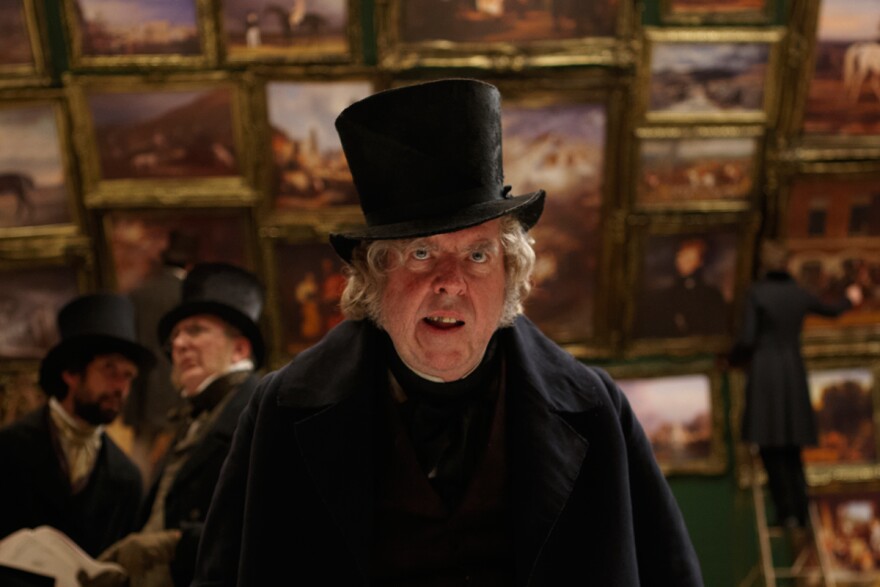Mike Leigh insists that Mr. Turner is not a biopic, meaning that it's not one of those typical Hollywood films filled with great moments in which the great figure demonstrates his greatness – with lots of swelling music, of course. Leigh is right; Mr. Turner is no Hollywood-style biopic.
Mr. Turner avoids anything like huge dramatic moments. Turner is an unimpressive-looking guy who shuffles around London, grunts and mumbles in a working class accent. He's no grand gentleman. He's played by Timothy Spall, who's no Brad Pitt. Spall is short and dumpy and does not come off as a beautiful international celebrity actor. Like Turner himself, Spall digs into his work and comes up with a masterpiece of acting in a masterpiece of a movie.
British painter J.M.W. Turner lived between 1775 and 1851. He painted mostly landscapes and changed the course of painting, at least in the Western world. Turner is often called the first Impressionist. His colors can be violent and he has an incredible eye for the wildness of weather and light.
His painting of the Slave Ship Zong, is about an actual incident in which British slavers threw human beings overboard in a storm so they could collect insurance on what they considered their property. The sea, the light and the weather dwarf the human event; you don't see the drowning human beings until your eye adjusts. The effect is traumatizing.
Mike Leigh's movie is about this guy, who lives with his father and housekeeper, has a couple of grown daughters with a woman whom he ignores when she shows up at his house – and he even denies that he has children. Turner's father is a retired barber who picks up pigments for his son from a supplier and grinds them at home. In one scene the father shaves his son, and in the next he delicately slices a bit of cheek off a hog's head. Turner grouses about the cost of supplies. He rides the train; he takes a room at a seaside boarding house under one of his middle names: Mallord.
He's just one more face in the crowd.
Mike Leigh did a ton of research for the movie, but the personal events he films are largely imagined. Turner did find a woman companion named Mrs. Booth, as the film shows. At a major exhibition of British painters, Turner has a painting of somewhat muted color hanging next to a more colorful work by Constable – so Turner suddenly thumbs a glob of red in the middle of his painting and calls it a buoy. That happened.
But Leigh's film immerses you in his sense of Turner's experience of the world rather than known events. With cinematographer Dick Pope, Mr. Turner embodies Turner's colors and sense of space. The movie puts you in a mix of the world this man inhabited and the world that must have been in his head, all counterbalanced by a portrait that films about artists never embody. Turner comes home from a trip that must have inspired him, and he sets to work. He stretches canvases, prepares his paints, and paints.
No one comes in to tell him that his latest painting is a masterpiece. He's not cheered by crowds of art lovers. He has no triumph. The one time he stands in front of people, he gives a boring lecture. But otherwise, he's fascinating. He wanders into a photography studio. He's curious and he asks the photographer questions while the photographer poses him. Turner doesn't tell the photographer who he is; he doesn't pull rank; he's just trying to figure out how this new invention will affect his own work, whether it will put him out of business or not.
You don't come out of Mr. Turner loving this man. You come out marveling that great art can come from anyplace.






